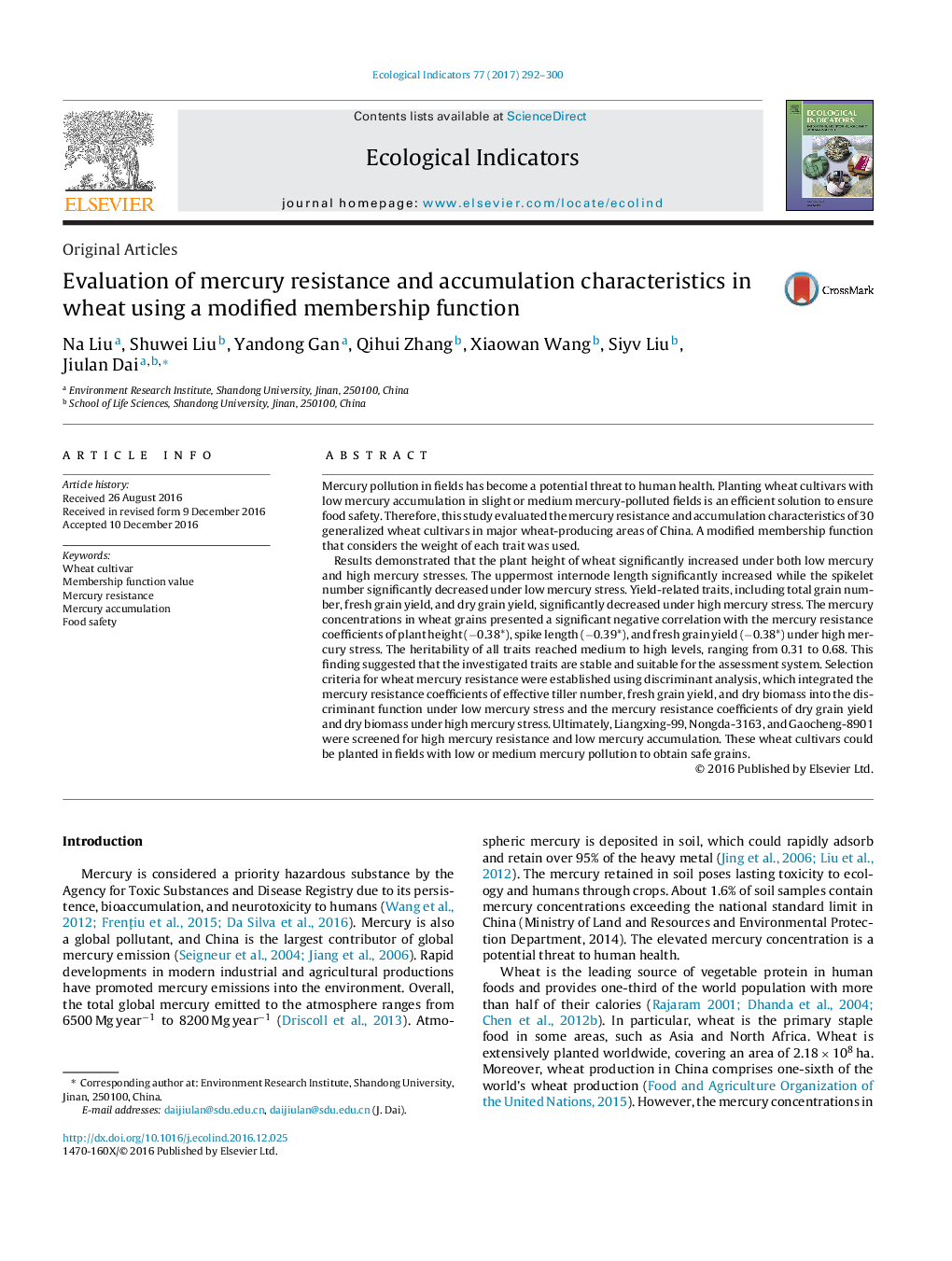| Article ID | Journal | Published Year | Pages | File Type |
|---|---|---|---|---|
| 5741637 | Ecological Indicators | 2017 | 9 Pages |
Abstract
Results demonstrated that the plant height of wheat significantly increased under both low mercury and high mercury stresses. The uppermost internode length significantly increased while the spikelet number significantly decreased under low mercury stress. Yield-related traits, including total grain number, fresh grain yield, and dry grain yield, significantly decreased under high mercury stress. The mercury concentrations in wheat grains presented a significant negative correlation with the mercury resistance coefficients of plant height (â0.38*), spike length (â0.39*), and fresh grain yield (â0.38*) under high mercury stress. The heritability of all traits reached medium to high levels, ranging from 0.31 to 0.68. This finding suggested that the investigated traits are stable and suitable for the assessment system. Selection criteria for wheat mercury resistance were established using discriminant analysis, which integrated the mercury resistance coefficients of effective tiller number, fresh grain yield, and dry biomass into the discriminant function under low mercury stress and the mercury resistance coefficients of dry grain yield and dry biomass under high mercury stress. Ultimately, Liangxing-99, Nongda-3163, and Gaocheng-8901 were screened for high mercury resistance and low mercury accumulation. These wheat cultivars could be planted in fields with low or medium mercury pollution to obtain safe grains.
Related Topics
Life Sciences
Agricultural and Biological Sciences
Ecology, Evolution, Behavior and Systematics
Authors
Na Liu, Shuwei Liu, Yandong Gan, Qihui Zhang, Xiaowan Wang, Siyv Liu, Jiulan Dai,
